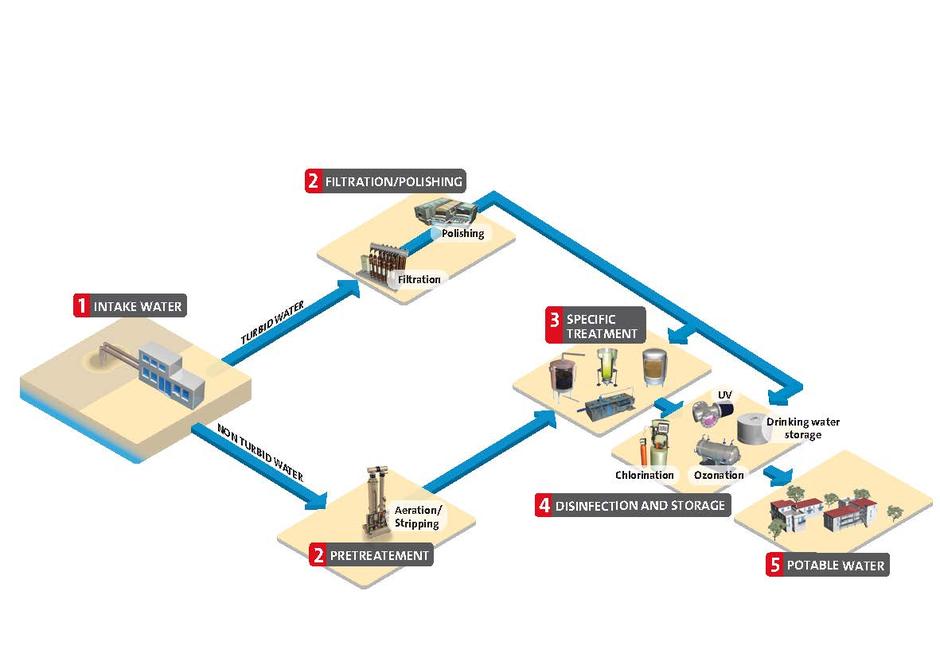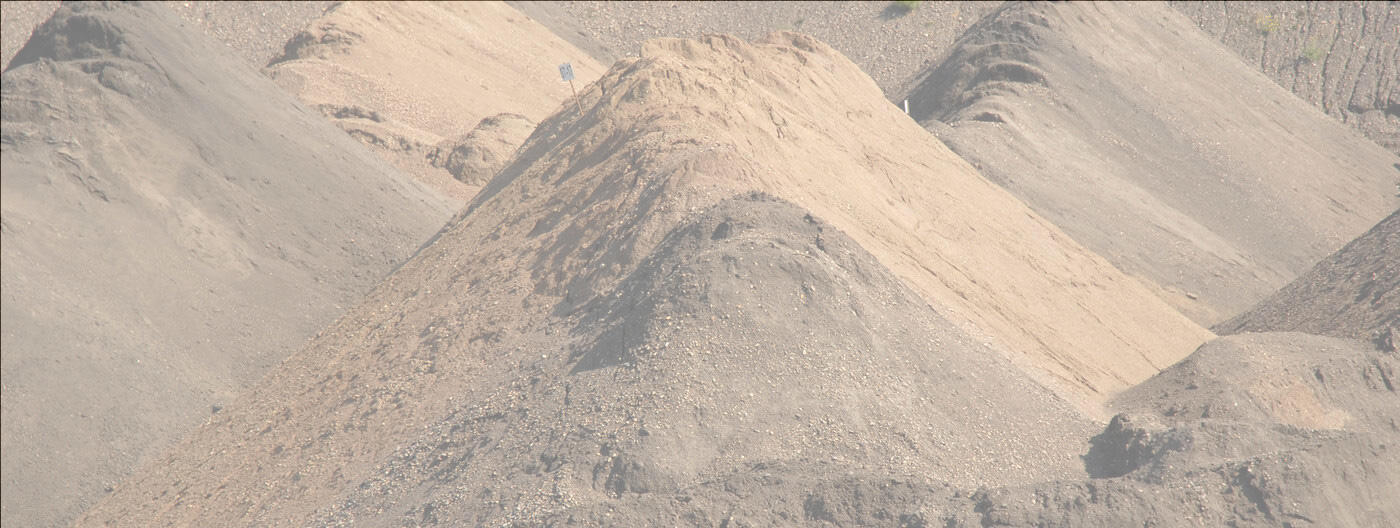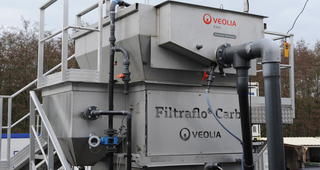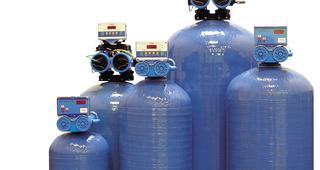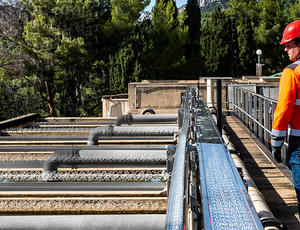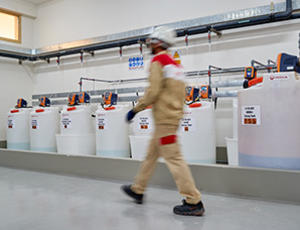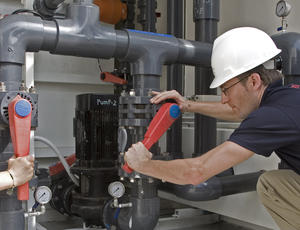Our experts at Veolia Water Technologies design innovative solutions for groundwater treatment projects meeting our clients’ needs, from water remediation to drinking water, complying with strict regulations.
Groundwater is the precipitation water infiltrated in the underground between sediments and cracks in rock. It is one of the main primary sources of drinking water and irrigation and can also resurface to replenish streams, rivers and lakes.
In nature, even the cleanest water contains impurities. Facing pollutants such as industrial and agricultural chemicals, the quality of groundwater and contaminants it may contain vary from one source to another which means it must be disinfected before consumption. In order to guarantee the highest safety level of drinking water, groundwater treatment must include specific and adapted solutions, including physical and chemical treatments.
Groundwater supplies drinking water and irrigation. It is also an important water source for industrial processes.
Complying with strict regulations, the most important benefit of groundwater treatment is to prevent harmful substances from reaching end-users. Also, as one of the main parts of the water cycle, the quality and quantity of groundwater treated is vital to keep environmental balance. Finally, the economic value of groundwater protection and remediation has already been proven.
How Veolia helps its clients to achieve high standards of groundwater treatment
Overall we provide a wide range of treatment technologies to efficiently produce high-quality drinking water from groundwater. The treatment train may include aeration, filtration, softening, disinfection and removal of microcontaminants.
- Reach very low cleanup criteria in soil and groundwater.
- Cleanup soil and groundwater below buildings and in delicate urban settings.
- Remove source zone/hotspot contamination.
- Remove deeply spread contaminations.
- Avoid excavation, disposal and any contact with contaminated soil.
- Provide you with a realistic evaluation of results that can be achieved.
Thermal soil remediation:
Soil remediation does not necessarily imply excavation, long-distance transportation, landfill or use of chemicals. Using in-situ thermal remediation you can reach impressive cleanup results in all geological formations by adding nothing but heat to the soil.
It is the most cost-effective way if the contaminants can be treated in the subsurface without excavation. The method is, safety-wise, attractive since you do not come into contact with contaminated soil. Generally speaking, a number of steel pipes are installed into the subsurface and heat is applied. As the soil is heated, the contaminants are destroyed or vaporized, captured by the extraction system and conveyed to the treatment plant. The technology can be applied in both saturated and unsaturated zones, in residential areas, below buildings, and to any depth.
Saving drinking water for present and future generations
We are committed to the planet and our customers. As part of Veolia Group, we have established our contribution to the international community’s sustainable development agenda, in line with the United Nations’ Sustainable Development Goals.
Listen now to a free podcast focused on Sustainable Development Goal 15 — protecting life on land. We visit two places where we have helped undo environmental damage with groundwater treatment processes such as purifying untreated water from an abandoned open-pit mine in Canada, and removing Agent Orange from soils in Vietnam.
Challenging groundwater treatment projects ensuring safe and effective remediation
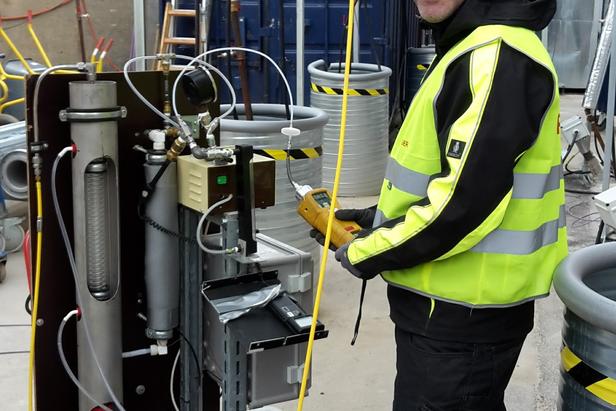
To remove hazardous contamination and protect vital groundwater resources in Copenhagen, Denmark, our subsidiary Krüger A/S performed thermal soil remediation in extremely tight spaces in urban settings.
Most of the contamination was located beneath a two story building, housing an active print bookshop and a medical lab that both stayed in operation during the remedy. Heating and vaporizing contaminants beneath a building with people working in it requires a very secure and robust extraction approach.
By adding nothing but heat to the soil, we have ensured an effective and safe remediation of 7,000 m3 of soil. During four months of heating, the contamination (chlorinated solvents) was vaporized, safely extracted and captured by activated carbon, preserving clean and safe drinking water for present and future generations.
The results of more than 250 hot soil core samples demonstrated the average post-treatment concentrations below 0.04 mg/kg, which was far beyond the cleanup criteria.
Discover our technologies for groundwater treatment
We offer a full range of technologies for the treatment of groundwater with a variety of characteristics. Our technologies are essential for public and private stakeholders wishing to improve the environmental impact of their water use.
Technologies - Groundwater treatment
Would you like more information about our technologies for groundwater treatment?
The use of groundwater for the production of drinking water will in many cases be a safer, economical and sustainable alternative to more treatment-intensive raw water types.

Rasmus Boe-Hansen
Innovation Manager - Water Supply
KRÜGER A/S
Contact Rasmus through his LinkedIn account
More services for groundwater treatment
FAQ about groundwater treatment
How do you ensure a sustainable groundwater abstraction?
It is important that the groundwater in the catchment area is protected so that sustainable abstraction can be maintained. Protection requires that resources be mapped and monitored and that conditions and restrictions be set on utilization. Other measures may include protection zones around abstraction wells, limiting the use of pesticides and fertilizers, and minimizing activities in general that carry a risk of polluting groundwater.
What are the most common groundwater treatment methods?
Groundwater treatment typically includes aeration for the addition of oxygen and the stripping of volatile compounds, sand filtration for the removal of particles and support for biological processes, and UV disinfection as a hygienic barrier. Other methods may include softening for reduction of calcium precipitation potential (CCP) and the use of adsorptive media (e.g., Granular Activated Carbon - GAC) for removal of micro-contaminants.
Is groundwater treatment applicable to larger water supplies?
Although simple treatment of groundwater greatly supports a more decentralized supply structure, areas with high population density can also benefit from groundwater resources. Of course, this will often require the water to be transported further from the catchment area to the treatment plant. In densely populated countries such as Denmark and the Netherlands, the water supply is largely based on groundwater.
How clean does groundwater get?
For volatile organic compounds (VOCs), concentrations are reduced to less than 1 mg/kg and 0.1 mg/l in soil and groundwater, respectively. Where desired, the system may be operated long enough to achieve maximum concentration limit (MCL) concentrations in the groundwater, and non-detect in soils. For semi-volatile organic compounds (SVOCs) treatment in soils, non-detect concentrations have been achieved by treating at 300-350°C for a period of several weeks. Basically, the in-situ thermal desorption (ISTD) system can be designed for the desired remedial efficiency.
Which contaminants in groundwater can be treated and which cannot?
Nearly any organic compounds or a combination of organic compounds can be treated with in-situ thermal desorption (ISTD) / In-Pile Thermal Desorption (IPTD).
Contaminants to be treated with ISTD/IPTD are:
- Polychlorinated biphenyls (PCBs), dioxins and dibenzofuran
- Polycyclic aromatic hydrocarbons (PAHs) and coal tar
- Trichloroethene (TCE), tetrachloroethene (PCE), 1,2-dichloroethene (1,2-DCE), trichloroethanes (TCA), and other chlorinated solvents
- Pesticides and herbicides
- Petroleum and petroleum products
- Benzene, toluene, ethylbenzene, xylenes (BTEX)
- Methyl tertiary butyl ether (MTBE)
- Any other volatile or semi-volatile hydrocarbon
- Dense and light non-aqueous phase liquids (DNAPLs and LNAPLs)
- Mercury
Contaminants not to be treated are:
- Heavy metals
- Inorganics
How deep can thermal wells operate?
Thermal wells can be used to treat contaminants to theoretically hundreds of meters, as well as under structures and roads. The deepest full-scale application to date is 50 meters. However, thermal conduction heaters are also used for thermally enhanced oil recovery at depths of more than 300 meters.
Can In-Situ Thermal Desorption (ISTD) be used around buried utilities and adjacent to foundations?
Many types of buried utilities, such as concrete sewage lines and steel water lines can be left in place and/or protected during heating through placement of heaters and insulation. Some utilities (e.g., gas lines, PVC pipes) may need to be rerouted or decommissioned.
Since the heat front drops off sharply adjacent to the heated zone, experience has shown that heating adjacent to foundations typically has no effect on the foundations. However, measures can be taken to further protect structures, if necessary.
Several ISTD remediation projects have now been accomplished adjacent to or beneath buildings both in residential and industrial settings.
Does In-Situ Thermal Desorption (ISTD) create dioxins?
ISTD is quite different from ex-situ thermal desorption or incineration. With these aboveground thermal technologies, the soil or sludge being treated is exposed to high temperatures only briefly - typically for seconds or minutes. Thus, there can be cool spots where the soil does not get fully treated and where compounds such as dioxins can sometimes be created. By contrast, with ISTD the entire treatment zone is heated to target temperatures for days, at a minimum. Most (approximately 95-99%) of the organic contaminants are destroyed in-situ. Not only are dioxins not created, treatability and field data indicate they too are destroyed, typically to below background levels. Dioxins that are extracted are treated in the air pollution control system.
Does In-Situ Thermal Desorption (ISTD) prevent revegetation after treatment or sterilize the soil?
Immediately after ISTD treatment the soil is sterile, but experience shows that recovery will be rapid. After the soil is disked, fertilized and seeded, following normal revegetation practices, regrowth during the first growing season after treatment should be as good as with other soil. Microbiota residing outside the target treatment zone may see mildly elevated temperatures, which are likely to promote rather than hinder their growth and attenuative capacity.
How does In-Situ Thermal Desorption (ISTD) compare with other in-situ remediation technologies?
A major reason for the effectiveness of ISTD is its application of heat to the soil using thermal conduction. During conductive heating, heat moves out through the soil and waste material in a highly predictable fashion, regardless of how heterogeneous the soil is or its permeability. This is in sharp contrast to the movement of a fluid through the soil, which is the basis for nearly all other in-situ remediation technologies (e.g., groundwater pump-and-treat, soil vapor extraction, air sparging, steam injection, solvent and surfactant injection or chemical oxidant injection). Rates of fluid flow can vary over many orders of magnitude, depending on how permeable the soil is and on the degree of heterogeneity. Fluid-based technologies thus tend to bypass some contaminated zones, leading to poor efficiency, diffusion-limited mass transport and an extended duration of remediation. By contrast, the thermal conductivity of a wide range of soil types varies over less than a factor of plus or minus two.
ISTD has a wider applicability than other in-situ thermal technologies. For example, the process of electrical resistivity heating, also known as Six-Phase Heating or joule heating, relies on the flow of an electrical current through soil. Electrical conductivity can vary over two orders of magnitude. Since electrical currents ceases to flow in soils once the water has boiled off, moreover, electrical resistivity heating cannot heat the soil above the boiling point of water. As a result, it is not suitable in thetreatment of high boiling-point compounds such as pesticides, PCBs, and PAHs that require stringent soil cleanup levels. Similarly, steam injection in the shallow subsurface is limited to heating approximately to the boiling point of water.
Technical resources
If you can’t find exactly what you are looking for, please contact us for further assistance.



